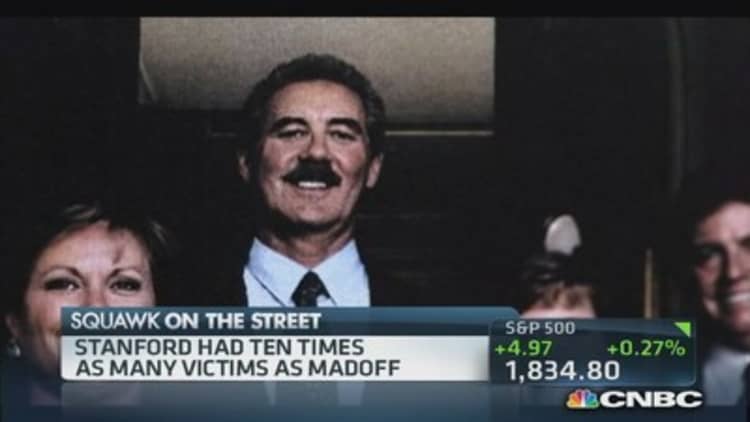A former top State Department official during the Clinton administration is set to go on trial next month on civil allegations he helped Texas financier Allen Stanford carry out his $7 billion Ponzi scheme, then destroyed possible evidence of his involvement.
Peter Romero, who is not accused of criminal wrongdoing, is a former U.S. Ambassador to Ecuador and a former Assistant Secretary of State for the Western Hemisphere. Soon after Romero left the State Department in 2001, Stanford hired him as a consultant and appointed him to his advisory board.
But Ralph Janvey, the court-appointed receiver seeking to recover funds from the fraud, says Romero's actual role was to help Stanford attract more victims.
"He traded on his prior government service to become an ambassador for Allen Stanford," said Janvey's attorney Kevin Sadler in an email to CNBC.
Janvey sued Romero in federal court in 2011 seeking the return of nearly $1 million in compensation that Janvey says was fraudulently obtained. A one-week jury trial is scheduled to begin Feb. 9 in Dallas.
"For seven years, Romero was paid more than $100,000 per year, plus expenses, for a less than part-time job that involved almost nothing more than lending his name and credibility to Stanford's organization," Sadler said.

The suit alleges Romero, 65, used his reputation to lure prospective clients and curry favor with politicians in the U.S. and Central and South America, even though he was in a position to know about the fraud.
Read MoreCould Allen Stanford go free? Convicted fraudster appeals
Last week, with the trial fast approaching, Janvey's team added new allegations that Romero willfully destroyed potential evidence in the case by terminating the email account he used to communicate with Stanford the day after the fraud became public in 2009. Janvey is seeking sanctions that would limit Romero's ability to defend himself in the trial.
Attorneys for Romero did not respond to an email from CNBC seeking to discuss the case. They have yet to respond in court to the allegations of evidence destruction. But in earlier court filings they have contended Romero's work for Stanford was legitimate.
"Romero was a good-faith transferee whose services as a member of the Stanford International Advisory Board for market-rate compensation constituted reasonably equivalent value," they argued in 2013.
Bellwether case
The trial comes almost exactly six years after the Stanford scam imploded, leaving thousands of investors penniless. Janvey has filed dozens of lawsuits against individuals and organizations that allegedly profited from or aided the fraud, with limited success. This is the first of the cases to go to trial.
"In many ways, it is a bellwether case for the receiver's cases against other insiders that will proceed to trial later this year and in 2016," Sadler said.
As of last June, Janvey had recovered only about $264 million, or less than four cents on the dollar lost in the fraud.
Stanford, once listed by Forbes as the 205th richest American, is serving a 110-year sentence at a high-security federal prison in Florida. With his remaining assets frozen and having fired the last of his court-appointed attorneys, Stanford is representing himself in appealing his 2012 conviction on 13 felony counts.


